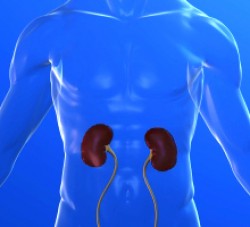Treatment Helps With Kidney Transplants
Treatment Helps With Kidney Transplants
About 1 in 3 candidates for kidney transplantation has a condition that causes their bodies to immediately reject transplanted organs. A new treatment promises to boost transplant success by “desensitizing” these patients to foreign human tissue. The treatment could lead to thousands more kidney transplants every year.
 For patients with renal failure, kidney transplants often offer improved survival and quality of life compared to dialysis. However, nearly one-third of the people who need a kidney transplant have a condition called HLA-sensitization, which makes it hard to find a matching donor organ. HLA, or human leukocyte antigen, is a molecule on cells that helps the body distinguish between itself and others. HLA-sensitized patients have antibodies against non-self HLA due to prior exposure to foreign human tissue, such as a transplant, a blood transfusion or pregnancy. These patients’ bodies reject organs with the same type of HLA molecules that they were exposed to before.
For patients with renal failure, kidney transplants often offer improved survival and quality of life compared to dialysis. However, nearly one-third of the people who need a kidney transplant have a condition called HLA-sensitization, which makes it hard to find a matching donor organ. HLA, or human leukocyte antigen, is a molecule on cells that helps the body distinguish between itself and others. HLA-sensitized patients have antibodies against non-self HLA due to prior exposure to foreign human tissue, such as a transplant, a blood transfusion or pregnancy. These patients’ bodies reject organs with the same type of HLA molecules that they were exposed to before.
A research team at the Johns Hopkins University School of Medicine, led by Dr. Robert A. Montgomery, tried a new approach to address this problem. They proposed that removing anti-HLA antibodies from the blood might make patients’ bodies more receptive to donor kidneys. The study was partially funded by NIH’s National Institute of Diabetes and Digestive and Kidney Diseases (NIDDK). The results were published in the July 28, 2011, issue of the New England Journal of Medicine.
To desensitize patients, the team filtered anti-HLA antibodies out of the blood using a technique called plasmapheresis. Low-dose intravenous immune globulin—an antibody preparation pooled from a thousand or more blood donors—was then given to the patients to substitute for the harmful antibodies. The researchers repeated this procedure several times before and after surgery. They performed the transplants once the patients had a substantially reduced number of anti-HLA antibodies. The patients also received immunosuppressive drugs, as transplant patients normally do.
From 1998 to 2009, Montgomery and his team performed transplants on 211 HLA-sensitized patients. For every patient they transplanted, they picked several similar patients from the kidney waiting list and monitored their progress. Some of these control patients stayed on dialysis only. A second group stayed on dialysis and waited to receive an HLA-compatible transplant if a donor organ became available (the dialysis-or-transplantation group).
More than 90% of patients were still alive after the first year, but that percentage dropped dramatically for both control groups by the end of the third year. After 8 years, 30.5% of the dialysis-only patients were still alive, while 49.1% of the dialysis-or-transplantation patients had survived. Over 80% of the transplant patients who got plasmapheresis treatment were still alive after 8 years, a remarkable improvement over the other options.
Adding plasmapheresis does increase costs, but Dr. Montgomery points out that a successful transplant with plasmapheresis is much less expensive than prolonged dialysis. “This treatment increases survival, ensures a better lifestyle, and saves the health care system money. There aren’t many things like that,” he says.
* The above story is reprinted from materials provided by National Institutes of Health (NIH)
** The National Institutes of Health (NIH) , a part of the U.S. Department of Health and Human Services, is the nation’s medical research agency—making important discoveries that improve health and save lives. The National Institutes of Health is made up of 27 different components called Institutes and Centers. Each has its own specific research agenda. All but three of these components receive their funding directly from Congress, and administrate their own budgets.




















